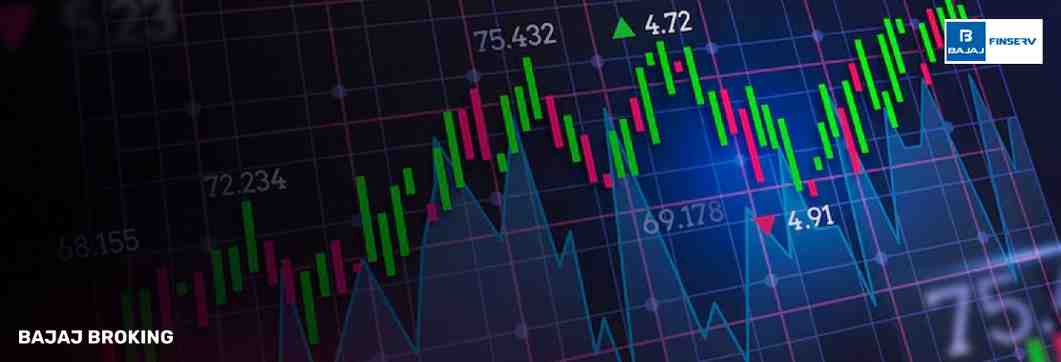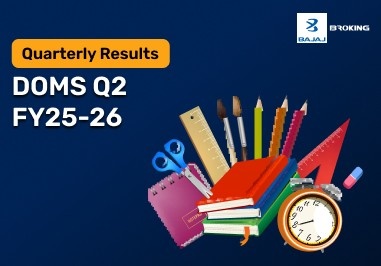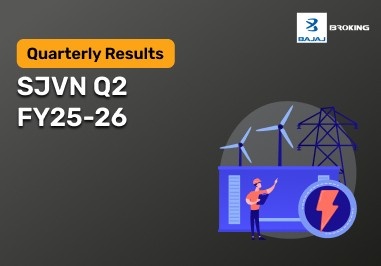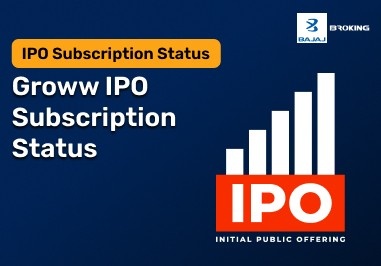If you're actively involved in the stock market, understanding volume can enhance how you read charts, assess trends, and enter or exit trades with more precision. Stock volume refers to the total number of shares traded for a particular stock within a specific time frame. This data is publicly available and can offer deep insight into market sentiment, price confirmation, and liquidity levels. Whether you're a short-term trader or a long-term investor, incorporating volume into your analysis can help clarify the strength or weakness behind price movements. For Indian traders who often rely on technical indicators or chart patterns, volume adds a valuable layer of validation. A price breakout supported by strong volume, for instance, tends to be more reliable than one that occurs on light trading activity. Learning how to analyse and apply volume data allows you to make better-informed decisions and avoid being misled by false signals in volatile markets.
What is stock volume?
Stock volume refers to the total number of shares that change hands in a specific security over a given time period—typically measured per day. It indicates the level of activity and interest in a particular stock and is a crucial data point for both technical and fundamental analysts. In the Indian stock market, volume is tracked and reported by exchanges like the NSE and BSE for every listed company.
High volume indicates strong investor participation, which can reflect rising interest, news-based activity, or institutional involvement. Low volume, on the other hand, may signal limited interest or indecision among traders. Volume is especially useful when combined with price movement to assess the strength behind trends, reversals, or breakouts.
You can find daily volume data on your broker’s trading platform or financial portals that offer real-time stock information. It’s also commonly displayed on technical charts and forms the basis of several volume-based indicators like OBV and Volume Oscillator. Understanding how volume works gives you deeper insights into market dynamics.
How is trading volume calculated?
Calculating trading volume is straightforward, but understanding how it is tracked and reported can help you interpret the data more effectively. Here is a step-by-step breakdown of how stock volume is calculated.
Before reviewing the points, remember that volume is aggregated live throughout the trading day and finalised at market close.
Track every trade on the exchange
Each time a buyer and seller agree on a price, it’s recorded as one transaction. Volume increases by one, regardless of how many parties initiated the trade.
Sum the number of shares exchanged
Volume reflects the total number of shares, not transactions. For example, a single trade involving 1,000 shares adds 1,000 to the stock’s daily volume.
Aggregate all share trades per session
By the end of the trading day, all shares traded across different transactions are summed to produce the day’s total volume figure.
Include block and bulk deals
Special transactions like block or bulk deals are also included in volume totals, though they are reported separately by exchanges for clarity.
Volume resets at session end
Each new trading day starts with a fresh volume count. Historical volume data is stored and used for comparative and trend analysis.
Importance of stock volume in trading
Stock volume plays a critical role in identifying the quality of price movements and trader interest. It serves as a key indicator of market strength and helps validate price action in any trading strategy.
Before diving into the points, assess whether your current trading method incorporates volume effectively. It could improve your entry and exit precision.
Confirms price trends
A rising price with increasing volume usually signals a strong uptrend. Conversely, falling prices on rising volume confirm a downtrend's strength.
Supports breakout validation
When a stock breaks a resistance or support level with high volume, the move is more likely to be genuine and sustainable.
Indicates liquidity and volatility
High volume ensures better liquidity, which means you can enter and exit trades with less slippage and tighter spreads.
Detects institutional activity
Sudden spikes in volume may suggest institutional buying or selling, offering retail traders cues about possible price direction changes.
Highlights potential reversals
Volume divergence—when price moves one way but volume doesn’t support it—can signal weakening momentum and possible trend reversals.
Volume and price relationship: What traders should know
The relationship between price and volume reveals valuable insights into market psychology and trade conviction. When volume increases in tandem with price, it generally confirms the trend. For instance, if a stock is rising on increasing volume, it implies more buyers are entering, reinforcing the move. However, if prices rise on low volume, it could suggest a lack of conviction, possibly leading to a short-lived rally.
Inversely, if a stock’s price falls on high volume, it may indicate heavy selling pressure and could precede further declines. A fall on low volume might just reflect profit booking or temporary weakness.
Volume also plays a role in identifying false breakouts. If a stock breaks through resistance but fails to attract higher volume, the move could be a trap. On the other hand, breakouts on significant volume typically suggest strong follow-through potential.
Furthermore, during consolidations or sideways movements, volume often dries up. A sudden surge in volume during such phases may hint at a breakout or breakdown. Observing volume alongside price patterns helps refine entry and exit points and increases the accuracy of technical analysis.
Key volume indicators used in technical analysis
Volume-based indicators help interpret price movement with greater precision. They combine volume data with price action to give you signals that improve the accuracy of your trading strategy.
Before reviewing the list, consider how you analyse trends. Adding these indicators can offer confirmation or early warnings based on market participation.
On-Balance Volume (OBV)
OBV adds volume on up days and subtracts volume on down days. It measures cumulative buying and selling pressure and helps confirm trend strength.
Volume Oscillator
This shows the difference between two moving averages of volume. Spikes indicate unusual activity, which may precede breakouts or trend changes.
Chaikin Money Flow (CMF)
CMF combines volume with price to assess the strength of buying and selling over a specific period. Positive values suggest accumulation; negatives signal distribution.
Accumulation/Distribution Line
This indicator uses volume and price to detect whether a stock is being accumulated or distributed. It helps anticipate breakouts or reversals.
Klinger Volume Oscillator
It compares short- and long-term volume trends and reacts to price changes, helping identify bullish or bearish reversals with volume confirmation.
Common misinterpretations of stock volume
Volume is a powerful tool, but misinterpreting it can lead to poor trading decisions. Many traders focus only on volume spikes without context, which may provide misleading signals.
Before reviewing the points, ask yourself if you tend to act on volume alone. Adding price context can greatly improve your analysis accuracy.
Assuming high volume equals bullish trend
High volume doesn’t always mean buying. It could be aggressive selling. Always analyse the direction of price movement alongside volume.
Ignoring low volume signals
Low volume during consolidation or pullbacks can still offer meaningful data. It often reflects indecision and may precede strong directional moves.
Misreading news-based volume
Spikes during news announcements may distort true sentiment. The initial reaction is often emotional and may reverse once the market settles.
Relying on volume without indicators
Using volume alone may not provide clear entry signals. Pair it with technical indicators or patterns for better confirmation.
Overlooking time frame differences
Volume interpretation can vary across time frames. What seems like a breakout on a 5-minute chart might be insignificant on a daily chart.
How to use volume data in your trading strategy?
Incorporating volume into your trading strategy helps confirm trade setups and identify strong market moves. You can use volume to validate breakouts, assess trend strength, and time your entries more effectively. For example, a price breakout backed by rising volume is more reliable than one occurring on low participation. Similarly, a sudden rise in volume during a downtrend may signal capitulation or a potential reversal point.
When using technical patterns like head and shoulders or triangles, volume acts as a confirming element. If you follow moving average crossovers or RSI-based strategies, watching for volume alignment can enhance conviction.
You should also monitor volume across multiple time frames. While intraday traders may focus on 5 or 15-minute volume, long-term investors may use daily or weekly volume to confirm broader trends. Integrate volume analysis into your existing strategy by setting volume filters or alerts for unusual activity.
Conclusion
Understanding and using stock volume can greatly enhance your trading decisions. Volume acts as a secondary but essential indicator that confirms price trends, reveals market sentiment, and signals potential reversals. By combining volume with other technical tools, you can refine your entries, exits, and overall strategy. For Indian traders navigating volatile markets, volume provides added clarity in identifying strong opportunities or avoiding traps. Whether you’re a beginner or an experienced investor, learning to read volume alongside price action brings more consistency and depth to your market analysis.














